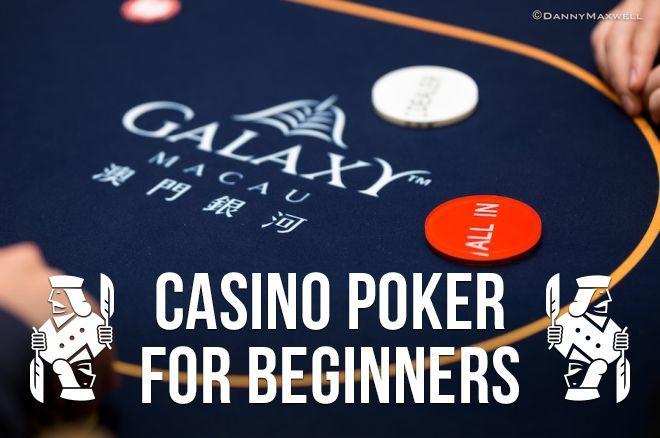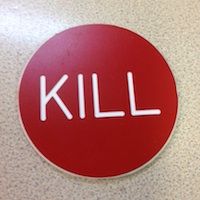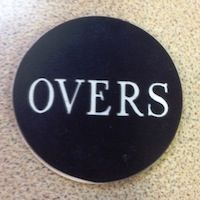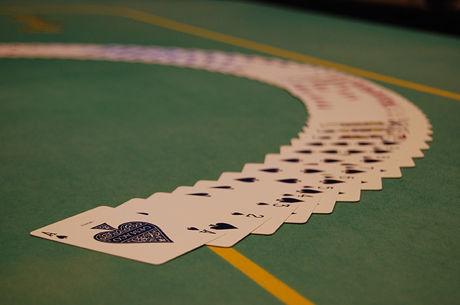Casino Poker for Beginners: Kill & Half-Kill Buttons, Overs and More

In this mini-series within a larger series of articles for those new to live poker, I've been discussing all of the different kinds of buttons that you might encounter at casino poker tables. There's much more to explain, so let's get right to it.
The Kill & Half-Kill Buttons
"Kill" is one of those words that has a specific and non-obvious meaning in poker that seems completely divorced from its more familiar use outside of the game.
In poker, a "kill pot" means a hand in which the stakes of the game are doubled from their usual amount. For example, when the "kill" is on, the bets in a $2/$4 fixed-limit Omaha hi/lo game suddenly become $4 and $8, although usually the blinds remain the same.
Additionally, the player who triggered the situation is required to seed the pot with some amount, usually double the regular big blind. A "half kill" means that the stakes are raised by 50 percent — in the example given, to $3/$6. You will never find both a full kill and a half kill being employed in the same game; it's one or the other, or neither, never both.

What causes a kill or half kill to go into effect? The most common triggers are (1) a player winning two pots in a row, or (2) a player winning a pot over a certain threshold amount. Again, these will never both be possibilities in one game.
The other side of a "kill" button will usually say either "no kill" or "leg up." "Leg up" is the term for a player who has just won a pot; it means if he wins the next hand, too, he will be required to "kill" the pot after that with that extra double blind. If that happens, the dealer will flip the button so that the "kill" (or "half kill") side is up.
If the casino is using the pot-size trigger, the dealer will usually keep the "kill" button either in the tray until a player wins a qualifying pot, or will keep it nearby with the "no kill" side up until the kill is in effect.
I realize that this all sounds complicated just reading about it, especially if you have not encountered this kind of game before. After doing it a time or two, though, you'll find that it all makes perfect sense and you'll wonder how you could ever have been confused about it.
The All In & Call Buttons
I lived and played poker in Vegas for a couple of years before I first started to see "All In" and "Call" buttons.

They are a fairly new development, and they seem to be getting more widely adopted, in both cash games and tournaments.
There is no mystery to these buttons. The dealer places the "All In" button on the table in front of a player who has either moved all of his chips forward, or has made a verbal declaration that he is "all in." If another player calls that bet, that player will get the "call" button.
The purpose of these is simply to add a visual cue to these important actions, lest any player miss them from inattention, excessive ambient noise in the poker room, or for other reasons. It is hoped that placing these markers on the table will reduce the number of times that an argument breaks out along the lines of, "I didn't hear him say he was all in! I wouldn't have called if I had known that!"
The Overs Button

Use of the "Overs" button is sufficiently rare that you'll probably have to go out of your way to find it. In six years of regular play in Las Vegas, I only saw them being used in two casinos.
The basic idea is that these buttons turn a limit game into a no-limit game under certain conditions. Each player can choose to either have or not have an "overs" button. If at any point in the hand, the only players left contesting the pot all have an "overs" button, then the betting changes to no-limit.
Personally, I don't like playing this way. I want my game to be either limit or no-limit. I don't mind if it changes between hands, as in a mixed game, but I don't want the structure of the betting to change in the middle of a hand. But some people find it to be great fun to suddenly have a pot become turbo-charged.
The Third Man Walking Button
Fortunately, the "Third Man Walking" button has nothing to do with a depressing Sean Penn movie. Rather, some casinos have what they call a "third man walking" rule, and this button signals that the rule is in effect.
The rule is intended to prevent a cascade or domino effect of players taking breaks. Some players severely dislike playing with several empty spots at the table. Such players will either take a break or just refuse to participate if three or more other players are simultaneously absent.
Of course, each such refusenik reduces the size of the game and is liable to trigger others to sit out, too. In this manner, three people gone can cause what had been a lively game to grind to an immediate halt.
To combat this, the "third man walking" rule says that a maximum of two players can be absent from the game at once. If a third person — it can be man or woman, of course (don't blame me for the sexist name, I didn't make it up!) — also decides to take a break, the player can only be gone until the big blind is due. If the player has not returned by then, the chips are picked up and the seat is given away to whomever is next on the waiting list. That way, even if a game has three people missing, it isn't for more than one round of play.
The "third man walking" button, then, is put in front of the seat of a player who steps away from the game when two other players are already absent. It serves both as a warning that the rule is in effect, and a promise to the remaining players that they won't be three people short for very long. Only a minority of casinos have this rule, so most likely you won't run into the situation, but it's best to be aware of it just in case.
All right, that puts us about three-fourths of the way through the catalog of poker-table buttons. Next week we'll get the subject all buttoned up.
Thanks to Dominick Muzio at the TI poker room and to Kristi Smith of the Mirage poker room (both in Las Vegas) for the photographs. Robert Woolley lives in Asheville, NC. He spent several years in Las Vegas and chronicled his life in poker on the "Poker Grump" blog.
In this Series
- 1 Casino Poker for Beginners: Taking a Seat in Your First Game
- 2 Casino Poker for Beginners: How to Keep or Change Seats in a Cash Game
- 3 Casino Poker for Beginners: Playing Your First Round
- 4 Casino Poker for Beginners: Rules and Etiquette Regarding Poker Chips
- 5 Casino Poker for Beginners: How to Handle Chips When Betting & Raising
- 6 Casino Poker for Beginners: Chip Rules, Chip Tricks, Collecting & More
- 7 Casino Poker for Beginners: The Deal With the Dealer Button
- 8 Casino Poker for Beginners: Missed Blinds, Seat Change & Other Buttons
- 9 Casino Poker for Beginners: Kill & Half-Kill Buttons, Overs and More
- 10 Casino Poker for Beginners: Lammers, Rebuy Buttons, Add-Ons and More
- 11 Casino Poker for Beginners: Keep Your Hole Cards Hidden
- 12 Casino Poker for Beginners: Marked Cards, Automatic Shufflers & More
- 13 Casino Poker for Beginners: Exposed Cards, Fouled Decks & Other Oddities
- 14 Casino Poker for Beginners: What It Means to 'Protect Your Hand'
- 15 Casino Poker for Beginners: When to Keep Your Cards Covered
- 16 Casino Poker for Beginners: Etiquette When Sharing Space at the Table
- 17 Casino Poker for Beginners: Bonuses, Jackpots, Drawings & Other Promos
- 18 Casino Poker for Beginners: Talking 'Table Stakes'
- 19 Casino Poker for Beginners: The One Thing You Can't Discuss at the Table
- 20 Casino Poker for Beginners: Be Careful Whenever Using 'Action' Words
- 21 Casino Poker for Beginners: Make a Mistake? Three Ways to Respond
- 22 Casino Poker for Beginners: Get to Know Poker Room Personnel, Part 1
- 23 Casino Poker for Beginners: Get to Know Poker Room Personnel, Part 2
- 24 Casino Poker for Beginners: A Few Unusual House Rules
- 25 Casino Poker for Beginners: Chopping Blinds - Etiquette & Expectations
- 26 Casino Poker for Beginners: Don't Do This When Playing With a Friend









